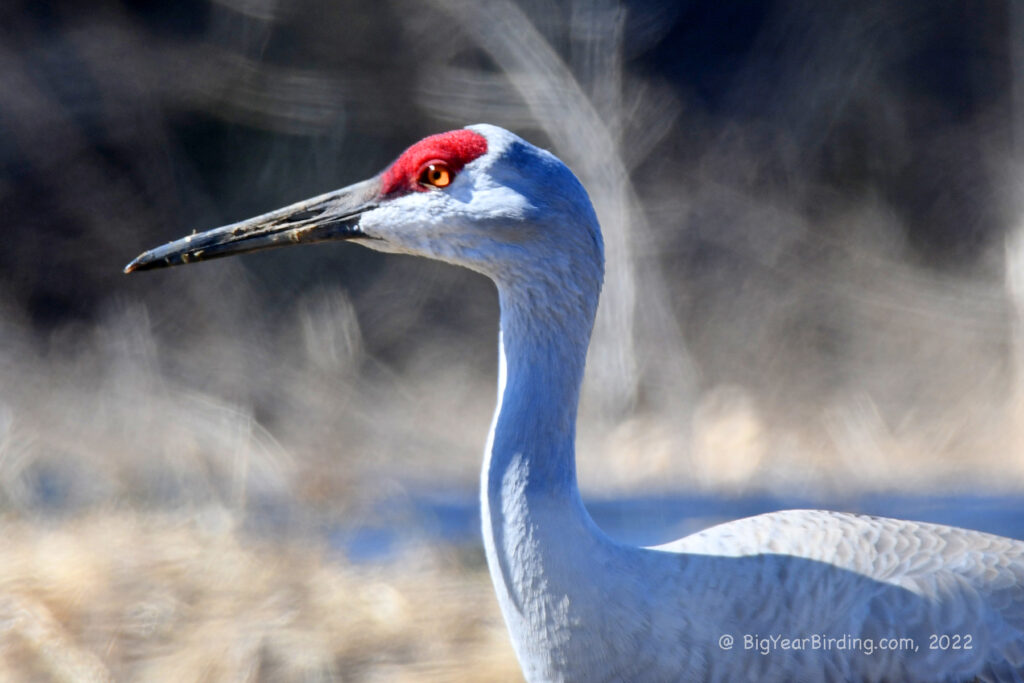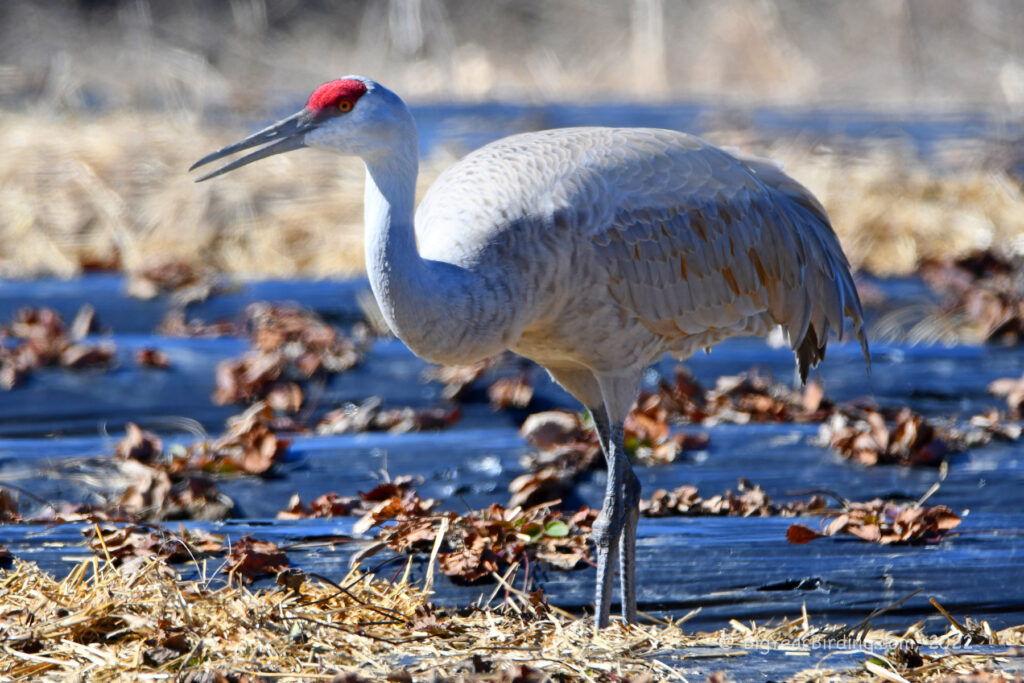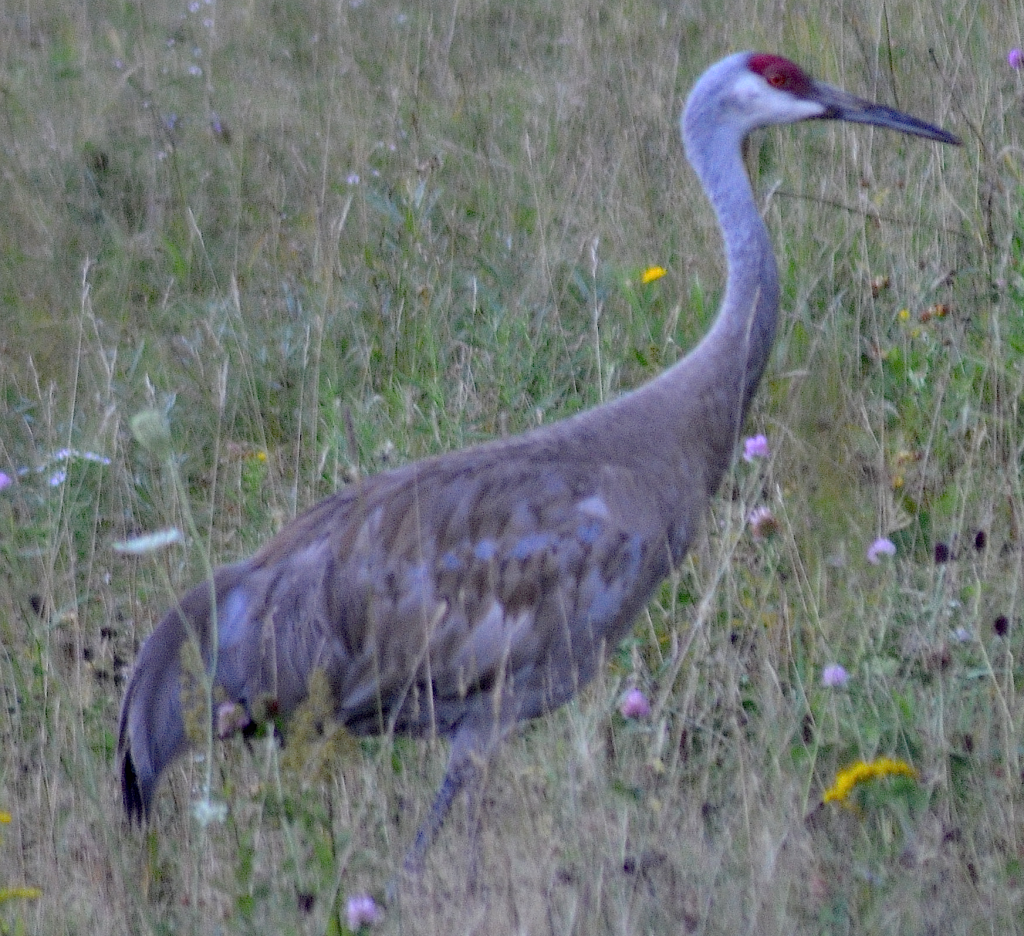
The Sandhill Crane (Antigone canadensis) is a large, graceful bird that is found across North America. These cranes have a wingspan of up to 6 feet and can stand up to 4 feet tall. They weigh around 10-14 pounds, with males being slightly larger than females. The sandhill crane has a distinctive red forehead and a long, pointed beak that is adapted for foraging in the mud and grasslands where they are often found.
One of the most distinctive field marks of the sandhill crane is its unison call. During breeding season, these birds can often be heard calling in chorus as they perform elaborate dance displays to attract mates. Their plumage is generally gray or brown, with a bright red patch on the crown of their head. They also have long, slender legs and a powerful wingspan, which makes them incredibly graceful in flight.
Sandhill cranes are known for their impressive migrations. During the breeding season, they can be found in Alaska, northern Canada, and parts of the western United States. As winter approaches, they begin to migrate south to warmer climates, including Texas, Florida, and Mexico. Some populations of sandhill cranes migrate as far as 5,000 miles each year, making them one of the longest migratory birds in North America.
Sandhill cranes are primarily herbivores and feed on a variety of plant materials, including seeds, berries, and small insects. They are often found foraging in wetlands and grasslands, and can sometimes be seen digging in the mud with their beaks to find food. Despite their large size, sandhill cranes are agile and nimble birds, and are capable of running and jumping with ease.

Overall, the sandhill crane is an iconic and important species that is beloved by birdwatchers and nature enthusiasts alike. With their distinctive calls, graceful movements, and impressive migrations, these birds are truly a wonder to behold.

